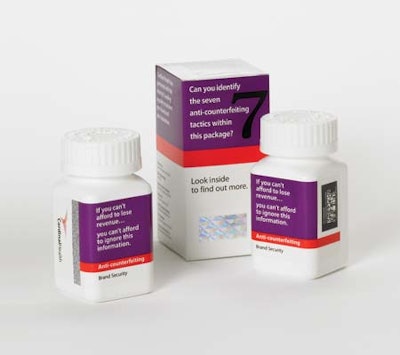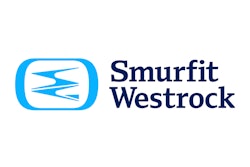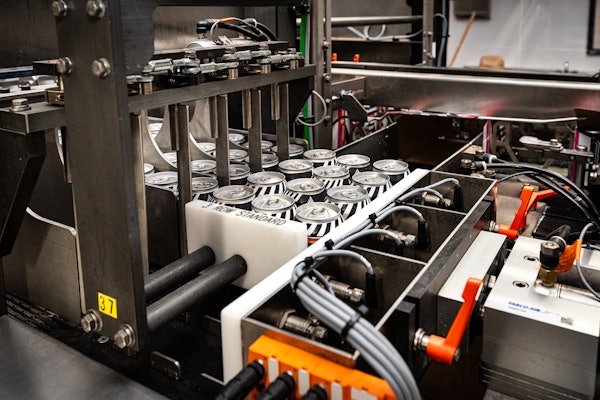Counterfeiting and product diversion are key security concerns for many consumer packaged goods companies.
“Any business today needs to look at brand security as basic to protecting the company and its customers,” says Michael O’Neil, chairman of the North American Security Products Organization, a group that audits suppliers and customers (see packworld.com/go/w174). From O’Neil’s view, security starts even before the security devices are applied to packages.
Gary Lerner, security expert and cofounder of Red Oak Group LLC (www.redoakgrp.com), says brand threats are growing: “More companies have more products at risk than ever before. The technology and sophistication of counterfeiters is increasing, so it’s getting harder for people to tell the real from the fake.”
“There is counterfeiting of everything,” says Robert Sherwood of authentication vendor Sekuworks (www.sekuworks.com). Sherwood, who has followed secured technologies for 20 years, says “I recently bought a $2 soy sauce in China and it had a brand protection label on it. The problem is only growing.”
“A number of companies actively protecting their products has dampened their security problems, but the general trend is that it is increasing,” says counterfeiting consultant Glen Gieschen, who heads Gieschen Consulting (www.gieschen.com).
In Gieschen’s just-released 2005 totals, drugs tracked in at #5 behind currency (#1) as the most popular items counterfeited, trailing only films, music, and checks. Microsoft ranked #1 in brands counterfeited, while Viagra was #11.
Gieschen says Microsoft’s security strategy is similar to that of other global companies: It has a specific brand protection strategy for each product and region. “Microsoft’s problems are different in China than in the Czech Republic,” says Gieschen. “Frankly, there’s no universal approach that seems to work.”
What does work? The tactics available to packagers range from optical variable devices (OVDs) such as holograms to any number of specialty inks, taggants, and other technologies (see sidebar, page 54). Tactics are as numerous as the vendors that supply them. But the tactics should result from a meaningful strategy. If there’s a common plan among the security experts willing to speak with us for this report, it’s that layers of protection including overt, covert, and forensic are absolutely crucial (see graphic, left).
“You have to continually raise the bar and change your security tactics, but not necessarily your strategy,” offers Lerner.
Equally critical is the balance in those layers, says Renard Jackson, executive vice-president for sales and business development for Cardinal Health Inc., a $75 billion drug distributor that’s one of the largest in the world. Jackson points to “heightened visibility around brand security based on a number of issues.” These include counterfeiting, pedigree legislation at the state level, and the alarming concern that product counterfeiting could be linked to drug trafficking and terrorism.
Besides a balance, Jackson says that companies need to move from one technology to another based on the amount of time they’ve used a particular security technology. As a rule of thumb, Jackson suggests looking at a timeframe of 10-15 months as a reasonable period before considering changing a security tactic.
Sekuworks’ Sherwood agrees changing security periodically is a great approach in an ideal world, but companies have to deal with the reality of costs and inventory associated with periodic changes.
“The technologies are sometimes used without real thought,” offers Sherwood. He points to UV inks as an example. The problem, according to Sherwood, is that such inks are fairly common and may not be appropriate as a foundation to a security program.
“It’s just another layer among layers,” Sherwood adds. For example, he knows of a brand protection initiative being undertaken by a South American wine consortium that should be implemented later this year. It involves a label stock for a range of brands and products that incorporates overt, covert, and track-and-trace technologies.
“Security technology is just a tool, the same as legislation or any other strategy to detect and deter counterfeiting,” Gieschen says. “But just because you stick a hologram on the package doesn’t mean you’re going to prevent counterfeiting.”
That’s where exclusivity is beneficial. “If there are one or very few companies that supply a technology and their chain of custody is secure, that can provide a good, robust layer of protection,” says Sherwood. “But if it’s readily available, then its value as a security device doesn’t do you much good—you may not be spending your money wisely.”
NASPO’s O’Neil is even more restrictive: “The security and market value of a security technology widely available in the public domain approaches zero.”
On the other hand, if you use a highly specialized or exclusive technology, perhaps you won’t need to change, suggests security printing expert and consultant Annette Jaffe (see sidebar above), who insists that layers are still crucial. “One security device is not enough,” she says.
Among those keeping a watchful eye on counterfeiting and a host of other packaging security issues is Dr. Nipun Marwah of MeadWestvaco Healthcare Packaging (www.mwvhealthcare.com). Marwah is product manager for Centuria, MeadWestvaco’s integrated approach to brand and supply chain security.
“Counterfeiting and efforts to combat it aren’t new, but we’ve seen renewed activity among pharmaceutical manufacturers since 2004,” says Marwah. “That’s when the FDA came out with guidelines to address counterfeiting using a multipronged approach. This put the onus on the pharmaceutical manufacturers to really address the issue head on.”
Comments issued by FDA this past February made it clear that the agency continues to place emphasis where implementation of electronic pedigrees is concerned and interested in identifying current barriers to adoption and finding ways these barriers can be overcome, says Marwah. So he expects drug makers to remain keenly interested in potential security solutions. His advice: “Be sure to take a dynamic approach to the problem of counterfeiting, an approach that ranges from the simplest graphic or structural change on a pharmaceutical carton to the most sophisticated track-and-trace technology out there.”
Whatever the layers used, Cardinal Health’s Jackson separates them into two categories: authentication and track-and-trace. The former consists of technologies like specialty inks and holograms, while the latter centers on radio-frequency identification and bar codes that offer serialization, which adds yet another level of security.
“Serialization permits product authentication based on its ‘unique license plate,’” says Jackson. He points out that a pedigree doesn’t necessarily mandate RFID, and he suggests reduced space symbology (RSS) as a precursor, supplement, or even alternative to RFID. “Short term, RSS can assist in the movement toward RFID. Long term, it can be an application to assist in redundancy,” he says. Jackson believes that there’s more interest now in meeting state requirements for pedigree tracking. “Eventually, there could be a national requirement for track-and-trace,” he predicts.
Red Oak Group’s Lerner says that “a really tight serialization system for the supply chain from start to finish provides a tremendous layer of protection.” Lerner also suggests companies consider covert serialization, which employs ultraviolet inks to create a bar code invisible to the naked eye that doesn’t interfere with the package design. It’s a method that has been used successfully for years on packages from toner cartridges to golf balls, he says.
RFID’s role
Supply chain expert Priyanka Gouthaman of Frost & Sullivan (www.frost.com) says RFID fits into business plans in two ways: For brand authentication, and to increase visibility and control in the supply chain. She feels a complexity for packagers is in the number of packaging formats, from bottles to blisters to cases, that could be RFID-enabled. “It’s one of the major challenges each packager must consider,” she says, though she feels there’s an immediate need for RFID to shore up security for pharmaceuticals. “Considering the specter of counterfeiting, it makes the clearest business sense right now for pharma,” she states.
Robert Kashmer, vice president information technology for H.D. Smith—a $2.5 billion drug wholesaler, the nation’s fourth largest—has wholeheartedly embraced RFID. He sees it as more of a solution than a tool. “RFID is good for security and it’s good for patient safety, which is our biggest focus,” says Kashmer.
H.D. Smith has focused on item-level tagging for two years. The company has received Oxycontin from Purdue Pharma with RFID tags at the unit level since 2004. In December, it added unit-level RFID-tagged Viagra from Pfizer.
In its operations, H.D. Smith personnel unpack cased product, place the unit-level RFID-tagged bottles into totes, and then associate the tote contents with the tote’s bar code identification for a “parent-child” association. At its headquarters distribution center in Springfield, IL, H.D. Smith operates an RFID portal integrated with its Warehouse Management System. The station is equipped with both 13.56 MHz high-frequency and 915 MHz ultra-high frequency technology. UHF, which matches the Wal-Mart mandate, accepts Oxycontin, while HF handles Viagra. Kashmer prefers UHF since it works better in reads of totes containing randomly oriented bottles. The wholesaler is also working with its customers—independent hospitals and retailers—to authenticate the products they receive at the end of the supply chain using RFID.
“We are expanding our RFID initiatives to other facilities and customers,” says Kashmer. “RFID is really a solution for several things: Foremost, it provides patient safety and it offers supply chain efficiencies along with e-Pedigree and authentication.
“Serialization is very important, and we see RFID is the primary vehicle for serialization with 2-D bar codes as a backup. This is an exciting time for our industry, with pedigrees tracking product from manufacturing, and RF will play a key part in that,” says Kashmer.
"Any business today needs to look at brand security as basic to protecting the company and its customers.”
The success of the program prompted Mike Celentano, Purdue Pharma’s associate director, supply chain and RFID systems, to conclude that “the fundamental building blocks for RFID-based serialized point-to-point e-Pedigree exist today.”
Additional insight into RFID’s potential to enhance packaging and supply chain security comes from a new study just issued by NanoMarkets (www.nanomarkets.net). Titled “Smart Packaging Markets: 2006-2013,” the study says “Smarter packaging means fewer fakes. The International Chamber of Commerce estimates that in 2003, counterfeit goods worldwide accounted for eight percent of total world trade. NanoMarkets believes this is a tremendous opportunity for smart packaging, noting that a combination of RFID authentication at point of sale, security inks, and other smart packaging approaches will make a major contribution to combating counterfeiting, especially in the food, beverage and pharmaceutical sectors.”
Scott Gottlieb, FDA Deputy Commissioner for Medical and Scientific Affairs, acknowledges the need to combine RFID with other authentication technologies. “We need layers of technology, much like paper money has many different technologies embedded in it to thwart counterfeiting. RFID is the most promising, and most advanced of these technologies, but we still need to continue to pursue other remedies.”
Gouthaman concurs. “It’s naïve to assume that RFID will be the answer for everything—RFID is not a complete answer. Companies need to continue using ‘traditional’ security layers such as specialty inks, taggants, and serialization.”
There is even a place for untraditional methods such as nanotechnology.
Nanotechnology to grow
In a recent survey of Healthcare Packaging readers, 42% of respondents listed RFID as the technology with the greatest chance to deter counterfeiting, followed by holograms (21%) and nanotechnology (19%).
Nanotechnology may be the least understood of the three, especially in the packaging space. Nanotechnology is not a “blue sky” technology, but another tool that’s being deployed to battle counterfeiters. Jim Rittenburg, vice president of pharmaceuticals at Authentix (www.authentix.com), says “nanotechnology is being used commercially. There are a lot of programs that are in the implementation phase, so it’s out here, it’s proven, and it’s expanding.”
Nanotechnology is among the technologies Authentix uses to help users with brand protection and security efforts.
Rittenburg does say that materials based on nanotechnology are being used in inks, coatings, plastic melts for extruded containers such as bottles and flip-top closures, and for hot melt adhesive.
BRAND PROTECTION ALLIANCE FORMED
Brand owners fearful of having your brand intellectual property stolen, take heart. A recently organized consortium called the Brand Protection Alliance may be the resource you’re looking for. Each of the nine companies represented has products and technologies relevant to brand protection. The members are: Acucote Inc., Atlantic Paper Co., Kodak, Dunmore Corp., Kurz Transfer Products, Water Ink Technologies, IIMAK, Alexander Watson Associates, and Document Security Systems. The idea behind the alliance is to establish a resource organization that will assist brand owners in designing, developing, and implementing customized, secure solutions against consumer product counterfeiting and diversion.
“The BPA does not manufacture or sell products,” says the organization in its Web site commentary. “We serve as a resource to brand owners who are struggling with product designs and implementation strategies.”
For more on BPA, visit www.brandprotectionalliance.org.
Nanotechnology can even be used to “mark” individual tablets. That’s important, says Rittenburg, when it comes to repackaging. “Products don’t always stay with the original manufacturer’s package. They may be resold on the Internet, or companies may repack the tablets into a different-sized bottle that’s more suitable for a hospital or other user.”
Sekuworks’ Sherwood says that tracking of individual pills is something that FDA is looking at. “That’s possible with today’s computing power, and it provides a whole lot more information when tracking down a problem.”
Another approach to marking individual pills or tablets is being explored by Kodak and its Traceless taggant technology. This security and authentication system tags substances with such a low level of taggant that it’s impossible to detect without a traceless reader. This technology gives a whole new meaning to “item-level tagging.”
Final thoughts
But how to begin? Sherwood suggests testing a technology to see what the true problem is before making a major commitment. A small label that contains the security feature or features can be applied to the packaging as a less expensive alternative to incorporating, for example, a taggant directly into the substrate material, he says.
There also needs to be a change in management’s mindset, according to Red Oak Group’s Lerner. “Companies are reactive, responding to an incident after the fact,” he says. “Instead, companies should be proactive and include protective security measures from the outset as part of the package design process.
“You have to continually raise the bar and change your security tactics, but not necessarily your strategy.”
“Understand your company’s areas of susceptibility,” he adds. “More companies and more products are at risk than people think, and the impact can be dramatic. It is worth at least a minimal investment to find if your products are at risk. Look first at products that are easy for people to copy or are important for people to copy. Your company should have a healthy dose of paranoia about counterfeiting.”


























